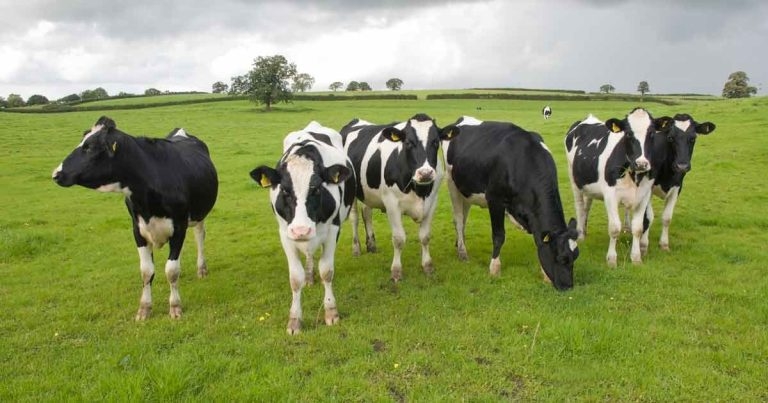14 Dec 2020
Biologists from Whitehead Institute in Cambridge, Massachusetts, find evidence of arms race between X and Y chromosomes in cattle to determine proportion of males and females in the next generation.

Image © Sorensen / Adobe Stock
Biologists have found evidence of an arms race between the X and Y chromosomes in cattle to determine the proportion of males and females in the next generation.
A team from the Whitehead Institute in Cambridge, Massachusetts, believe that understanding how this process works would allow breeders to improve the economic efficiency of livestock farming.
It would enable them to increase the numbers of more valuable female calves produced by dairy cattle and of the bull calves favoured in beef breeds.
Their study, in the journal Genome Research, described a detailed analysis of the genes found on the Y chromosome of a Hereford bull. They found this chromosome is largely made up of multiple repeat copies of the same genes, coding for proteins involved in controlling the activity of the testes in male offspring.
They interpreted these findings as a strategy for increasing the likelihood that a “male” gamete harbouring the Y version of the sex chromosome would succeed in fertilising the female, X chromosome‑bearing ovum. It developed as a means of countering the tendency of X chromosomes to promote the expression of genes favouring the production of female offspring.
In most species, evolutionary advantages exist in producing roughly equal numbers of male and female offspring. So, the individual responsible for determining which sex chromosome is passed on – the male in mammals, or the female in bird or reptile species – will generate similar numbers of gametes of each type.
Biologists have long known various extrinsic factors can change this balance. In many insect groups, for example, intracellular bacteria such as Wolbachia are inherited along the maternal line. This parasite can kill off male embryos or promote the development of unfertilised eggs to maximise the numbers of infected female insects within the population, to further its own evolutionary agenda.
However, the study – by Jennifer Hughes and her colleagues at the Whitehead Institute – focused on the intrinsic process known as “sex chromosome meiotic drive”, in which the evolutionary battle is not fought between different species or organisms, but within the reproductive cells of an individual animal.
Some circumstances exist in which a process leading to excessive numbers of one sex may be beneficial for the species as a whole.
Males will usually be capable of inseminating several different females, so producing more females as a result of X chromosome meiotic drive may help the numbers of a threatened species rebound more quickly after a decline in its population.
But when the Y chromosome is driving this process, it will produce an excess of males with little prospect of paternity.
Dr Hughes said: “Meiotic drive is detrimental to the species as a whole, which is why when a driving chromosome appears, a suppressor of that driver almost always follows.
“In most cases of meiotic drive, it is the X that evolves as the driver and the Y evolves as a suppressor to balance things out again.”
As British evolutionary biologist Bill Hamilton theorised in the 1960s, without the development of a suppressor it is likely a biased sex ratio within a population could become so great that many females would go unmated and a species could become extinct, at least at a local level.
Dr Hughes said examples of this evolutionary arms race have been recognised in a range of animal and plant species.
She said: “It is considered relatively common in insects, but very rare in mammals, mostly limited to a few rodent species.
“Our paper shows evidence of sex chromosome meiotic drive in cattle for the first time, which leads us to speculate that this phenomenon could be more widespread in mammals.”
Although in most instances meiotic drive is likely to be detrimental or even disastrous in a free-living animal species, that may not be the case for a domesticated population.
Dr Hughes said: “Manipulating sex ratios in cattle could be very beneficial in agriculture. I don’t believe the technology for manipulating or disrupting high copy number genes in cattle is in widespread use yet, though the technology is commonly used in laboratory mice.”
Indeed, the method – known as RNA interference – has been used in studies to demonstrate how a sex ratio skewed towards females can be produced by disrupting multiple copy genes on the Y chromosomes of mice.
Dr Hughes said: “I think that these technologies will continue to be developed for use in cattle and manipulating sex ratios may be possible in future.”